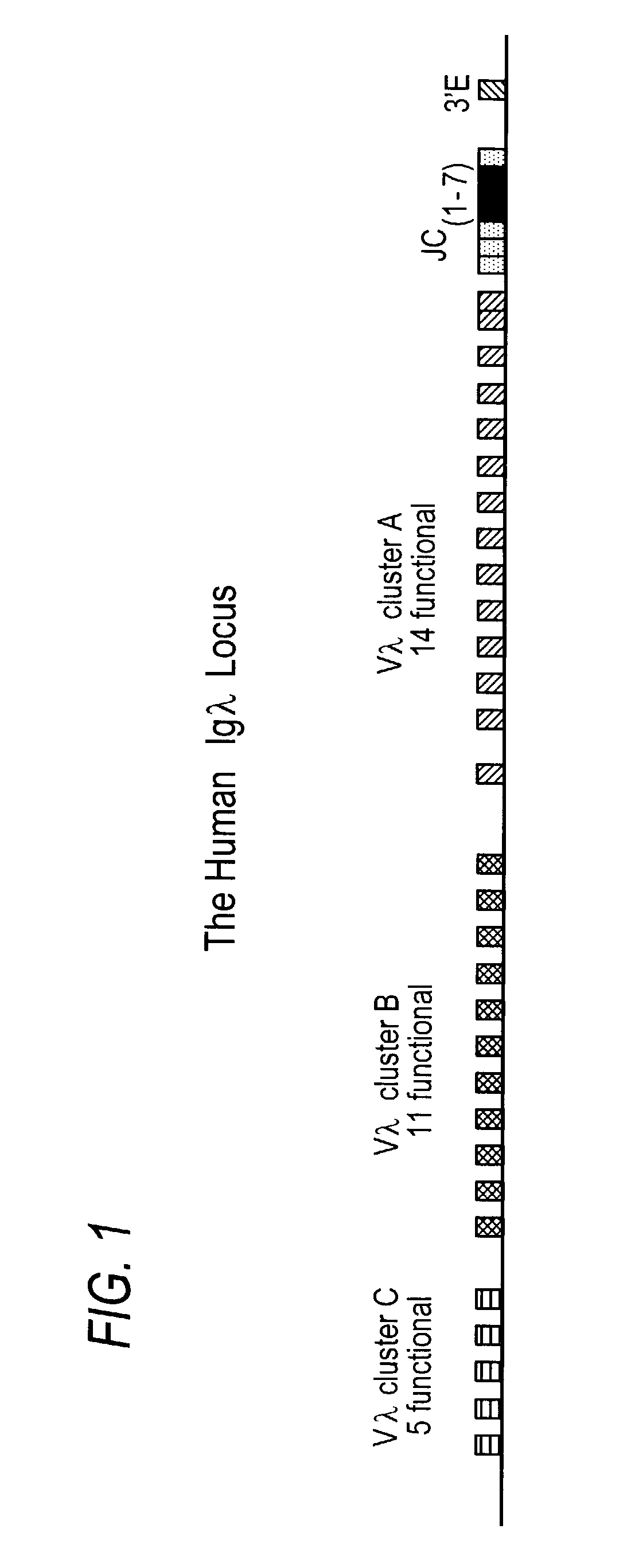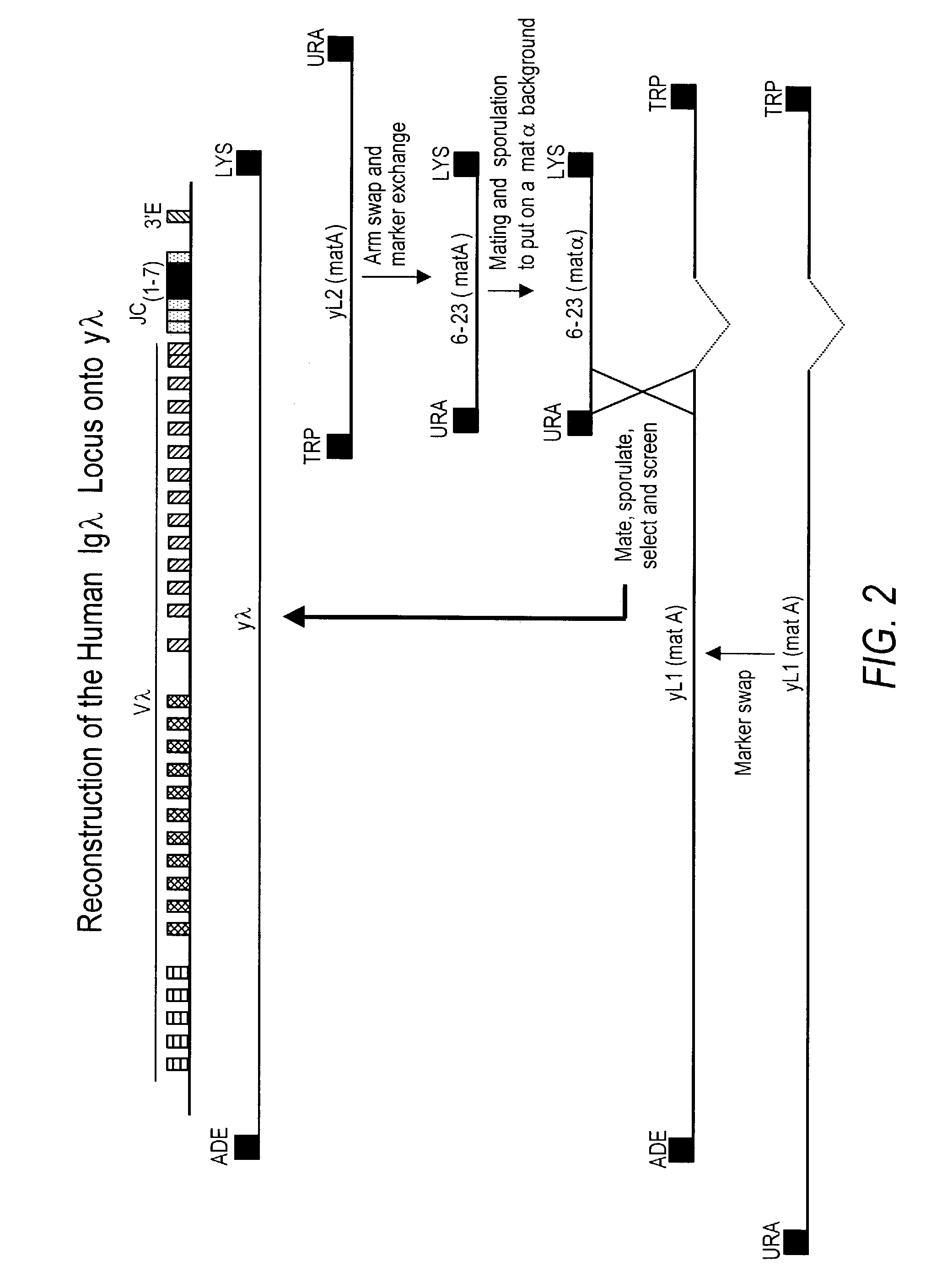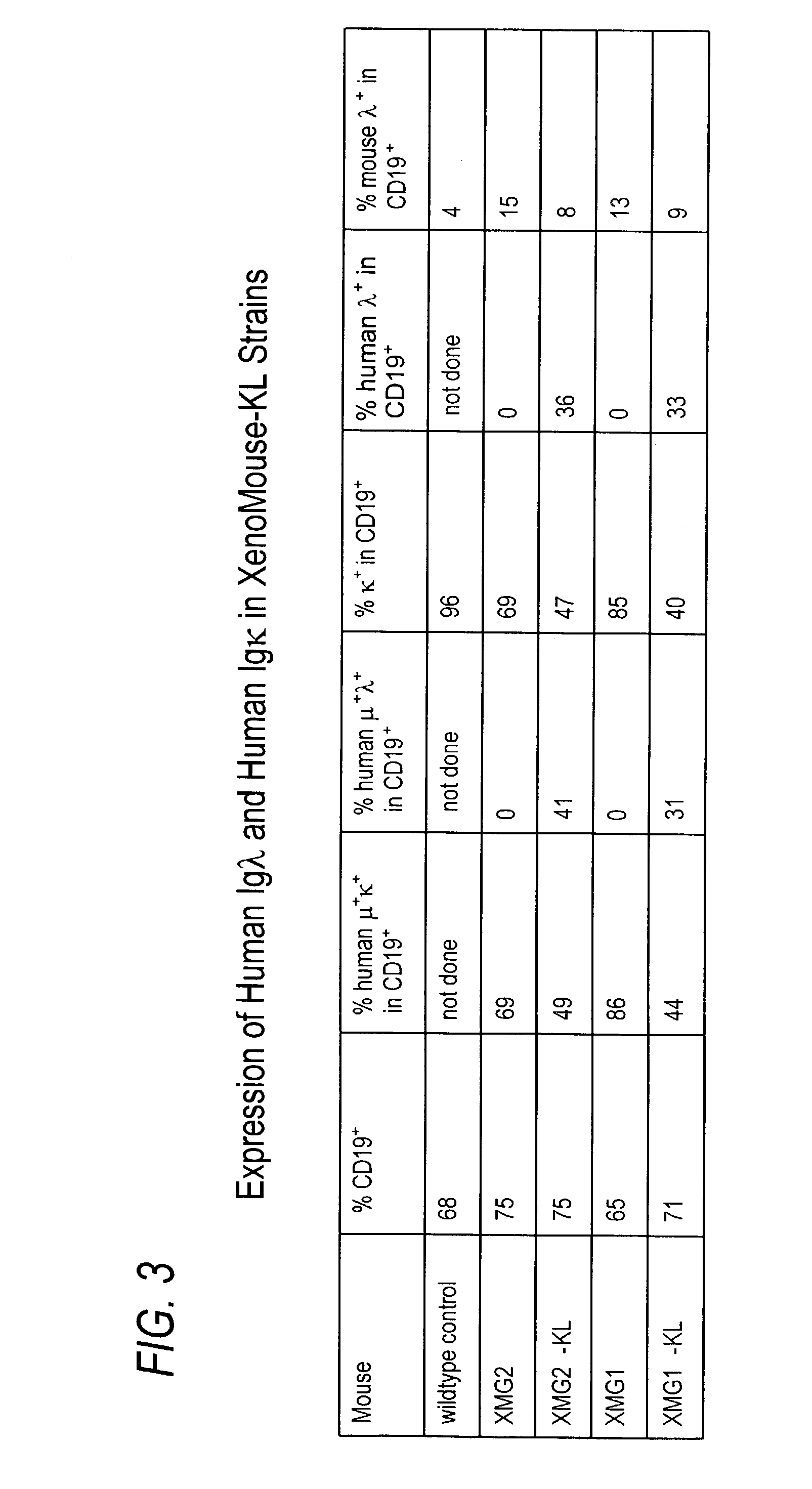Transgenic animals bearing human Iglambda light chain genes
a technology of light chain genes and transgenic animals, which is applied in the field of transgenic nonhuman animals, can solve the problems of host rejection, difficult to achieve human monoclonal antibodies in vitro, labor-intensive protocols, etc., and achieve the effect of restoring normal b-cell developmen
- Summary
- Abstract
- Description
- Claims
- Application Information
AI Technical Summary
Benefits of technology
Problems solved by technology
Method used
Image
Examples
example 1
Identification of YACs Comprising Human Immunoglobulin-λ Light Chain Sequences
[0251]YACs comprising parts of the human immunoglobulin-λ light chain locus and probes for all Vλ and Cλ were obtained from the Medical Research Center (MRC, Edinburgh, UK). The L1 YAC and L2 YAC were initially analyzed to (1) confirm the presence of the correct human immunoglobulin-λ loci; (2) assess the stability of the immunoglobulin-λ gene sequences; (3) determine the orientation of the immunoglobulin-λ gene sequences; and (4) confirm the presence of the yeast markers in the YACs.
[0252]Yeast containing the YACs were streaked for single colonies on SC-URA agar plates (see Birren et al., supra, Vol. 3, pp. 586-87) and incubated for three to four days at 30° C. until colonies appeared. Single colonies were inoculated into 5 mL of SC-URA liquid media and grown to saturation. Freezer stocks and DNA preparations were made (yeast plugs). See Birren et al., supra, Vol. 3, pp. 391-395.
[0253]To confirm the prese...
example 2
Construction of a YAC Comprising a Full-Length Human Germline Immunoglobulin-λ Locus
[0258]To reconstruct the entire germline human immunoglobulin-λ light chain locus on a single YAC, the L2 YAC sequences had to be recombined with the L1 YAC sequences in the proper orientation. For numbering of nucleotides in the λ locus, the complete nucleotide sequence of Kawasaki, supra, was used. The contigs of Kawasaki were accessed from Genbank (www.ncbi.nlm.nih.gov / Genbank / GenbankSearch.html) and re-assembled into a contiguous nucleic acid sequence of 1 Mb using the Vector NTI software (InforMax, North Bethesda, Md.). This sequence covers approximately 125 kb 5′ of the first Vλ gene and includes through the 3′ enhancer.
Construction of pYAC-5′ and pYAC-3′
[0259]The first step was to alter the L2 YAC to comprise shortened arms that were appropriate for recombination with the L1 YAC. See FIG. 2. We constructed targeting vectors for both the 5′ and the 3′ ends of the L2 YAC (pYAC-5′ and pYAC-3′, re...
example 3
Production of Mice Bearing a Heritable Human Immunoglobulin-λ Light Chain Locus
[0277]Spheroplasts of the yeast clones were produced using Zymolyase 20T (1.5 mg ml-1) and then fused with 3B1 ES cells to create ES / yeast cell fusions (ESY) as described, e.g., by Jakobovits et al., Nature 362: 255-8 (1993), and WO98 / 24893, both of which are herein incorporated by reference. Cells were selected with HAT medium beginning 48 hours after fusion. Clones were picked and expanded. The ES cell lines were then analyzed by Southern blot for the presence and integrity of the human Ig λ YAC, using probes spanning the YAC created in Example 2 above.
[0278]Seven ES cell lines were found to contain the human Ig λ YAC intact. Positive ESY cell clones were expanded and microinjected into appropriate mouse blastocysts, e.g., C57BL / 6J, using techniques well known in the art. Microinjected blastocysts were placed into the uterus of pseudo-pregnant C57BL / 6 foster mothers. Chimeric animals were identified by ...
PUM
| Property | Measurement | Unit |
|---|---|---|
| Fraction | aaaaa | aaaaa |
| Fraction | aaaaa | aaaaa |
| Fraction | aaaaa | aaaaa |
Abstract
Description
Claims
Application Information
 Login to View More
Login to View More - R&D
- Intellectual Property
- Life Sciences
- Materials
- Tech Scout
- Unparalleled Data Quality
- Higher Quality Content
- 60% Fewer Hallucinations
Browse by: Latest US Patents, China's latest patents, Technical Efficacy Thesaurus, Application Domain, Technology Topic, Popular Technical Reports.
© 2025 PatSnap. All rights reserved.Legal|Privacy policy|Modern Slavery Act Transparency Statement|Sitemap|About US| Contact US: help@patsnap.com



